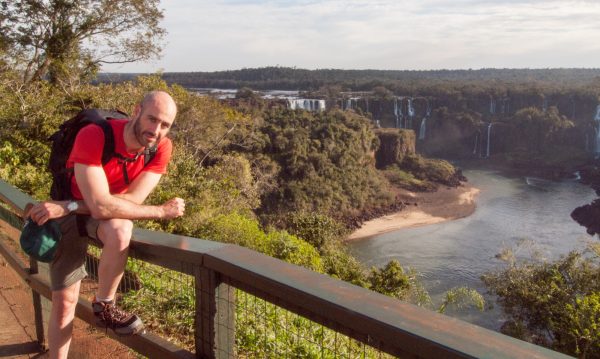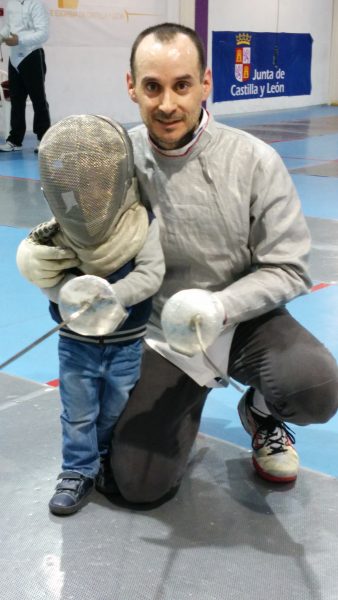By Mathieu Boudreau

This first MRM Highlights Pick interview of 2022 is with Antonio Tristán-Vega and Santiago Aja-Fernández, researchers at the University of Valladolid in Spain. Their paper is entitled “Accurate free-water estimation in white matter from fast diffusion MRI acquisitions using the spherical means technique”. We chose this paper because the authors demonstrated exemplary reproducible research practices; in particular, in the context of a larger software tool that they developed and manage (dMRI-Lab), they shared tools developed as part of this work.
To discuss this Q&A, please visit our Discourse forum.
MRMH: Can you tell us a little about yourselves and your background?
Antonio: My background is in communications engineering. I did a PhD under the supervision of Santi (Santiago) and my research focus has always been medical imaging. I started off doing general image processing, like registration, filtering, and segmentation, but then I quickly moved on to diffusion MRI. I focus on mathematical modeling more than on clinical applications. I also do a lot of teaching at my university.
Santiago: I finished my PhD in 2003, and although my group back then was working with medical imaging, I was not involved in those projects. But after my PhD, I started to focus on medical imaging, starting with ultrasound imaging, which is very hard to work with because you are dealing with analog data – we had to record the video output of the ultrasound scanner to get the images. I did my postdoc in Boston and that’s where I started getting involved with diffusion MRI. Now I’m a professor at the Universidad de Valladolid.
MRM: Before we jump into the paper, could you clarify what you mean by the “spherical means technique” referred to in the title of your paper?
Antonio: Basically, in diffusion imaging what you do is acquire images weighted by bipolar pulsed gradients along different spatial directions. The spherical means technique is a way of averaging the signals of all the orientations you acquired, prior to using the data in your analyses. This can be useful for certain applications because you not only improve the signal-to-noise ratio, but also dramatically reduce the number of degrees of freedom to be optimized, which can make these techniques more robust.
MRMH: Thanks! Could you give us a brief overview of your paper?

Antonio: The central motivation for this paper was data access, or rather the lack of it! Our aim was to extend the advantages of advanced diffusion imaging to the clinical practice setting, so that the clinical teams we work with can benefit from them. In practice, clinicians cannot spend several hours acquiring three different diffusion shells with hundreds of gradient directions and large b-values. Clinicians only have access to DTI-like data. So, the aim of this paper was basically to estimate the free water compartment using this type of data. Even though there are other methods that can do this, they typically depend on complex multi-shell data. Therefore, our idea was to estimate this particular parameter, the free water compartment, but using an acquisition protocol closer to diffusion tensor MRI. We developed a method that allows us to do this by adding only a few extra gradient directions at an intermediate b-value to our regular DTI MRI protocol. With this very subtle change in the acquisition protocol, we are able to accurately estimate the free water compartment voxel-by-voxel, without spatial regularization. We compared this method with comparable ones, and found that, unlike the other methods, ours did not introduce a bias in the estimation of free water whenever you have crossing fibers in the brain.
Santiago: Yes, so to contextualize the problem, when we acquire diffusion clinical data, we also need to acquire T1, T2, resting-state signal, etc. So, we asked Antonio if we could minimize the extra acquisitions needed to estimate the free water, and through mathematical modeling he found that six additional measurements at a b value of 500 were all it took, and I think that’s really great for the clinical community.
MRMH: Why is free water an important parameter?
Santiago: There are many brain diseases that are thought to be related to the water content in the brain and to neuroinflammation. For instance, through investigation of migraine and headaches in collaboration with neurologists, we have come to believe that free water may play a role. There have also been studies of schizophrenia that have considered this aspect, and more recently we’ve been looking at whether patients with long-term effects of COVID might also have neuroinflammation.
MRMH: You have shared the code you developed for this work in the context of a larger software project that’s on dMRI-Lab. Do you want to say a little bit about that project?
Antonio: Basically, it’s been our way of packaging all the work we’ve been doing over the last 10 years or so. Having said that, we only decided to package and upload it to a public repository about three years ago. We also uploaded some individual pieces on the MATLAB file exchange, such as those related to denoising and noise estimation.
MRMH: How has the COVID pandemic impacted your research?
Santiago: Well, the week before the first lockdown (Winter 2020), we started a very ambitious longitudinal clinical study. But after scanning only two patients, we had to stop, and it is only now (Winter 2022) that we are picking that up again. Because we were mainly working from home, we have done a lot of theoretical work over these past two years.
MRMH: What do you enjoy doing when you’re not working on your research? And you tell us a little bit about your city?
Santiago: Valladolid and the surrounding area is very nice, there is a lot of history here and the food and wine is amazing. We are thinking of organizing a workshop here in the near future, because I’d love it for the people in the ISMRM community to discover our part of Spain. As for free time, I have two kids, so I have very little of it [chuckles].
MRMH: Is that a collection of graphic novels I see behind you, too?
Santiago: Oh, yeah (laughs). I used to read more than I do now, but the lockdown was a good opportunity to get back into them. Some of these are my brother’s; he is actually an artist for Marvel, he did a well-known run of the Hawkey comics.
MRMH: Oh cool! And how about you, Antonio?
Antonio: I’m quite into fitness and sports, either outdoors or at the gym. And my interest in signal processing branches out into my hobbies as well, as I’m enthusiastic of photography and digital editing of pictures.




